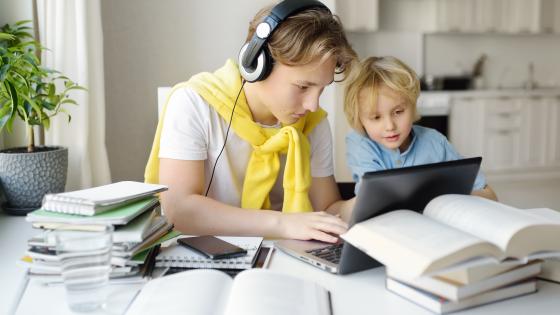In many circumstances, individual utility does not seem to adequately explain peoples’ behaviour. An explanation may be found in how peers and others value this behaviour or activity. These are called ‘peer’ effects and there is plenty of evidence showing that they matter in areas that are critically important to policymakers. Peer effects have been shown to matter in education (Sacerdote 2011) and crime (Bayer et al. 2009, Patacchini and Zenou 2012), for instance.
What are 'peer effects'?
Although we know that your peers’ views affect your behaviour, defining what we really mean by a ‘peer effect’ is more challenging. Sacerdote (2011) adopts a broad definition of peer effects to encompass nearly any externality in which peers’ backgrounds, current behaviour, or outcomes affect your own outcome. By limiting peer effects to externalities, Sacerdote is excluding market-based or price-based effects. For example if the families in a particular county contribute to a demand shock for private schooling which raises or lowers the dollar cost of private schooling to the individual, that is clearly a market-based effect and not a peer effect.
The peer reference group: Local-aggregate vs local-average model
In our recent research, we adopt a similar definition of peer effect and investigate the notion of ‘peer reference group’. For that, we consider two social-network models aimed at capturing the different ways peer effects operate:
- In the so-called local-aggregate model, peer effects are captured by the sum of friends' efforts in some activity so that the more active friends an individual has, the higher is her marginal utility of exerting effort.
Social-multiplier effects are clearly important in this model.
- In the local-average model, peers' choices are viewed as a social norm and individuals pay a cost for deviating from this norm.
It is social norms that are important in this model. Each individual wants to conform as much as possible to the social norm of her reference group, which is defined as the average effort of her friends.
New research
To test the two approaches, in our recent CEPR Discussion Paper (Liu, Patacchini and Zenou 2013) we use of a unique database on friendship networks from the National Longitudinal Survey of Adolescent Health (AddHealth).
The AddHealth database has been designed to study the impact on adolescents' behaviour of the social environment – things like friends, family, neighbourhood and school. Data has been collected on US students in grades 7-12 from a nationally representative sample of roughly 130 private and public schools in years 1994-95. The most interesting aspect of the data is the friendship information, which is based upon actual friend nominations. It is collected when individuals were at school where students were asked to identify their best friends from a school roster (up to five males and five females). As a result, one can reconstruct the whole geometric structure of the friendship networks.
We find that:
- For juvenile delinquency, students are mostly influenced by the aggregate activity of their friends (local-aggregate model).
This indicates important social-multiplier peer effects in delinquent activities.
- For education, both the social-multiplier and social-norm effects matter, even though the magnitude is higher for the social norm effect.
This indicates that students tend to conform to the social norm of their friends in terms of effort in education (local-average model).
What it means for policy
Our results shed light on several policy approaches including the so-called ‘key-player policy’. The idea is to remove the criminal that reduces total crime in a network the most (Ballester et al. 2006, 2010; Liu et al. 2012). Our results suggest that this would be effective since the effort of each criminal and thus the sum of one's friends' crime efforts will be reduced. In other words, the removal of the key player can have large effects on crime because of the feedback effects or ‘social multipliers’ at work. As the fraction of individuals participating in a criminal behaviour increases, the impact on others is multiplied through social networks.
For education policy, our results show that the local-average model is at work. This suggests that one should change the social norm in the school or the classroom. One should try to implement the idea that it is ‘cool’ to work hard at school.
An example of a policy that has tried to change the social norm of students in terms of education is the charter-school policy. The charter schools are very good in screening teachers and at selecting the best ones. In particular, the ‘No Excuses policy’ (Angrist et al. 2010, 2012) is a highly standardised and widely replicated charter model that features a long school day, an extended school year, selective teacher hiring, strict behaviour norms, and emphasises traditional reading and math skills.
The main objective of these policies is to change the social norms of disadvantage kids by being very strict on discipline. This is a typical policy that is in accordance with the local-average model since its aim is to change the social norm of students in terms of education. Angrist et al. (2012) focus on special needs students that may be underserved. Their results show average achievement gains of 0.36 standard deviations in maths and 0.12 standard deviations in reading for each year spent at a charter school called ‘Knowledge is Power Program (KIPP) Lynn’, with the largest gains coming from the Limited English Proficient (LEP), Special Education (SPED), and low-achievement groups. They show that the average reading gains were driven almost entirely by SPED and LEP students, whose reading scores rose by roughly 0.35 standard deviations for each year spent at KIPP Lynn.
Conclusion
Policymakers typically seek to influence peoples’ behaviour. Understanding human behaviour is thus, of course, an important input to better policy. Recent theory and data have allowed the profession to reach beyond oversimplistic views of human motivation. We hope this will lead to better policy.
References
Angrist J D, S M Dynarski, T J Kane, P A Pathak and C R Walters (2010), “Inputs and impacts in charter schools: KIPP Lynn,” American Economic Review Papers and Proceedings 100, 239-243.
Angrist J D, S M Dynarski, T J Kane, P A Pathak and C R Walters (2012), “Who benefits from KIPP?” Journal of Policy Analysis and Management 31, 837-860.
Ballester C, A Calvó-Armengol and Y Zenou (2006), “Who's who in networks. Wanted: the key player,” Econometrica 74, 1403-1417.
Ballester C, A Calvó-Armengol and Y Zenou (2010), “Delinquent networks,” Journal of the European Economic Association 8, 34-61.
Bayer P, R Hjalmarsson and D Pozen (2009), “Building criminal capital behind bars: Peer effects in juvenile corrections,” Quarterly Journal of Economics 124, 105-147.
Liu, X, E Patacchini and Y Zenou (2013), “Peer Effects: Social Multiplier or Social Norms?”, CEPR Discussion Paper No. 9366.
Liu, X, E Patacchini, Y Zenou and L-F Lee (2012), “Criminal networks: Who is the key player?” CEPR Discussion Paper No. 8772.
Patacchini, E and Y Zenou (2012), “Juvenile delinquency and conformism,” Journal of Law, Economic, and Organization 28, 1-31.
Sacerdote, B (2011), “Peer effects in education: How might they work, how big are they and how much do we know thus far?”, in E A Hanushek, S Machin and L Woessmann (eds.), Handbook of Economics of Education 3, Amsterdam: Elevier Science, 249-277.




